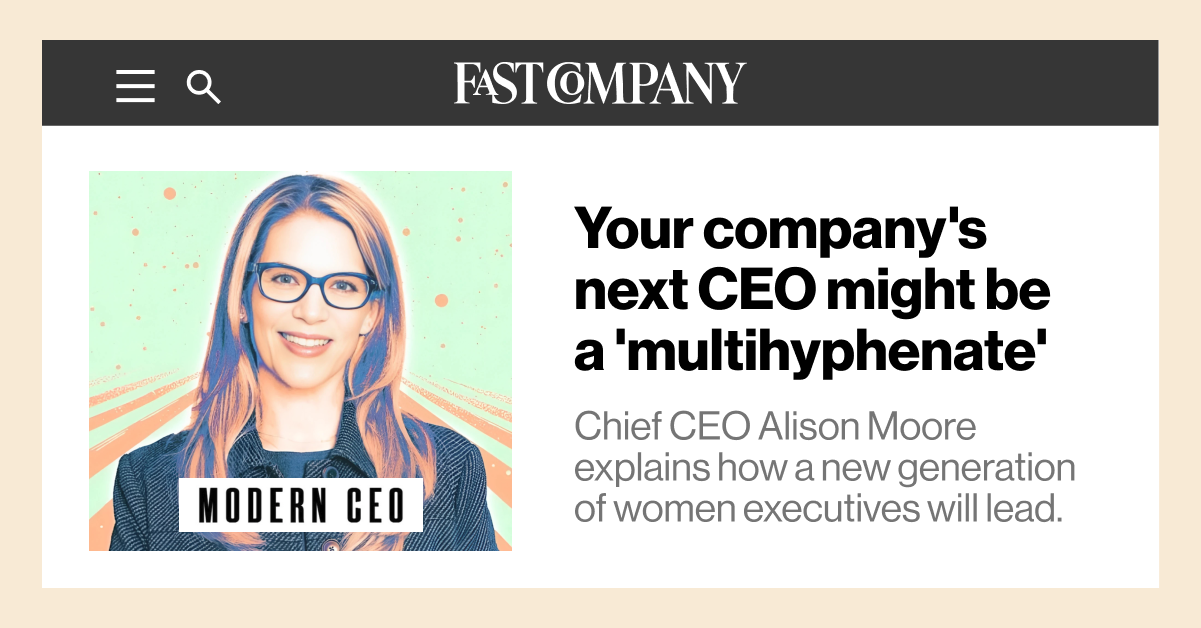It’s not an easy time to be a CMO in corporate America. There’s been a wave of apologies from corporations whose bold ad campaigns appeared to be too bold for consumers. From Bumble's blowback for their anti-celibacy billboards to Apple’s apology following their iPad Pro commercial crushing traditional art tools, the quest to stand out in the market can quickly push companies into a spotlight that’s a little too glaring.
Marketing managers have always felt pressure to strike just-the-right-notes in their campaigns, says Jennifer Stephens Acree, Founder and CEO at JSA+Partners, a boutique communications firm serving Fortune 500 companies to small startups. But a number of factors have made the balancing act tougher, including rapidly shifting cultural expectations and a social media landscape where a single ad can supercharge sales or sink them.
“It’s always easy to blame the CMO when things go wrong, but these things aren’t done in isolation,” Acree says.
In other words, marketing leads may be taking an unfair share of the blame for company missteps — and it’s making the position more perilous. The average tenure for a Fortune 500 CMO in 2023 was just 4.2 years, according to SpencerStuart’s CMO Tenure Study. Etsy, UPS, and Walgreens eliminated the role altogether earlier this year. And CEOs have less trust in CMOs in 2023 than in prior years, according to one annual study.
The question remains: How do CMOs take smart risks to help their organization stand out in the sea of brands?
Act With Authenticity
Maintaining authenticity is key to a successful marketing campaign, especially when it has the potential to court controversy. A big reason for Bumble’s recent stumble is because the brand’s ads, stating “a vow of celibacy is not the answer,” didn’t match the company’s original vision of empowering women to make their own dating choices.
Compare that campaign to an equally bold one by e.l.f. Beauty, titled “So Many Dicks”. In a series of digital ads that recently debuted on Wall Street, the cosmetics company calls for more boardroom diversity by highlighting a startling fact: There are 566 men named Richard, Rick, or Dick serving on company boards in the U.S., compared to only 806 Black women, 774 Asian women, 283 Hispanic women, and three Native American women.
It was a message backed up by the company’s internal practices.
“While we’re proud to be one of only four (out of 4,200) publicly traded companies in the U.S. with a board of directors that is two-thirds women and one-third diverse, we desire to be one of many. To instigate bold change, you need to take bold action,” said Kory Marchisotto, CMO at e.l.f. Beauty.
“Once your [brand] ethos illuminates the path, then lead with your head, heart and soul – together,” she continues. “Use your head to translate data into actionable insights. Use your heart to lead with passion and kindness. It’s your soul that is the inspirational energy source that can move others. If you truly live your values as e.l.f. does – head, heart and soul – your community holds your hand for the ride,” says Marchisotto.
Maintain Your Relationship With the CCO
Another big reason for brand missteps is a lack of communication between marketing and communications. CMOs have to maintain their relationship with the CCO to lead effective brand strategy.
“The communications and marketing functions both co-own the brand, and need to be working hand-in-hand to make sure they meet those objectives and create a positive brand for customers and for all the other key stakeholders,” says Acree.
Ideally the CEO will facilitate a culture of collaboration and set the tone for cross-functional leadership. However, the CMO may need to take that step.
“It’s imperative that the CMO and CCO are in lock-sync,” Acree says, noting that there’s “no need for a turf war” between the two, since there’s plenty to do, and the jobs serve very different functions. She recommends that CMOs loop in the CCO to any potential marketing campaigns before creative has been crafted.
“The comms function can really add a layer of strategic counsel at the beginning of the creative process that can in a lot of instances probably help mitigate risks,” advises Acree.
Lean Into Stakeholder Feedback
Before launching any campaign, carefully consider how the message may be received from the perspective of all stakeholders — customers, employees, and shareholders.
For example, Apple’s iPad Pro ad aimed to empower creatives, but the company was forced to admit the message “missed the mark.” In the video, everything from musical instruments to video games are crushed by a giant hydraulic press. Customers were angered by the ad, which seemed to imply that human experiences were being replaced by technology — a potent fear for many professionals in the age of AI.
"You can sometimes alleviate that [concern] with focus groups and other things to make sure the tone is on message. I think it would be smart for any organization to be triple checking how that message might be received and really thinking about all the scenarios,” advises Acree.
Employees can also be a great resource for test driving new marketing messages.
“Internal stakeholders are the first ambassadors for your brand and you want them to not only be excited about your campaign but also understand the ‘why’ behind it,” says Chief Member Lynn Pina, CMO at GeoBlue, an independent licensee of the Blue Cross Blue Shield Association.
“That said, there is always an element of risk when it comes to translating ideas and concepts into actual creative campaigns and we have to also be comfortable taking a leap of faith and not over-testing to the point that you end up with the lowest common denominator/least creative work,” says Pina.
Of course, it’s easier to take risks when the CMO has the backing of company leaders — and that support pays off.
“E.l.f.’s investment in marketing have grown significantly over time with the full support of our CEO and the C-Suite because it’s part of our flywheel,” says Marchisotto. “Investing in marketing leads to top-line growth which leads to EBITDA (Earnings Before Interest, Taxes, Depreciation, and Amortization) margin expansion. There’s no C-Suite leader who argues with that,” she says.



